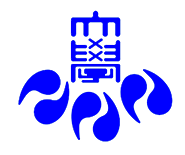Greetings
Saitama Medical Center, which opened in 1985, is a major medical center consisting of the main building, the Center for Maternal-Fetal and Neonatal Medicine, the Department of Emergency and Critical Care Medicine, two research buildings, and a management building on a vast site that covers approximately 100,000 m2. It has 1,057 beds and 36 hospital departments, making it the largest hospital in Saitama Prefecture. There are more than 400 doctors and they treat about 2,100 outpatient patients per day. Among the state-of-the-art facilities, it became a Medical Helicopter Base Hospital for Saitama Prefecture in 2007, and in 2016 it was designated as Pediatric Intensive Care Unit as regional core hospital, not only contributing to local medical care, but in the Saitama Medical University Hospital Group, it is regarded as a "Super General Hospital." As a university hospital, we have achieved excellent results in education and research.
The purpose of the Clinical Training Program is for the medical trainees to learn basic knowledge, medical examination skills, ideas and the code of conduct as a doctor. We take advantage of the characteristics of the hospital and have devised a wide range of training, from common diseases encountered on a daily basis to management of highly specialized diseases. In addition to the "3 Hospital Free Selection Programs" common to the 3 hospitals of the Saitama Medical University and the "Research Mind Development Free Selection Program" in the training program, we prepare a unique course that emphasizes the perinatal development system, local medical care in cooperation with the remote island training in Okinawa and off-campus cooperation facilities, and we meet a wide range of needs for doctors who want training.
When you think of your long career as a doctor, how you spend your two years as an early clinical trainee is also very important in terms of building a foundation for the future. Many experienced physicians are enrolled in Saitama Medical Center for the daily heated guidance of the trainee physician and there are various programs that support training, such as CPC and luncheon seminars, in addition to one on one guidance by the tutoring system and many conferences and reading sessions in each department. Also, there is a large training room on the second floor of the management building, which was completed in 2015 and is equipped with individual learning spaces as well as a shower and an on-call room for trainee doctors. There is a 24-hour convenience store, a coffee shop and a restaurant downstairs to take care of daily life. Also, there is also a dormitory for trainee doctors in a separate building. This year, the Training Management Working Group was established as a subsidiary body of the Training Management Committee. We want to implement system design and a reform of systems with the younger generation of advising doctors and trainee doctors in order to perform better clinical training by directly incorporating the voices of the trainee doctors with a sense of speed.
Koedo-kawagoe is a historic, quiet city where the old town remains. It is also close to the metropolitan area and has become crowded with many tourists in recent years. Why don't you start your two years as a trainee doctor in Kawagoe with a new sensation of tradition mixed with urban? We want to raise as many doctors as possible who will have dignity and a research mind, in line with the aim of "Fostering excellent practical clinical physicians," which is the school philosophy of the Saitama Medical University.
Saitama Medical Center
Hospital Director, Haruhiko Tsutsumi
Chair of Training Management, Masahiro Kizaki
